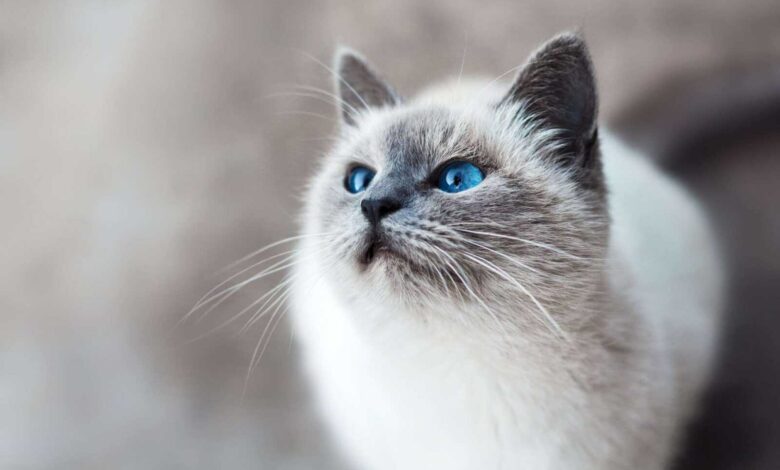
Cat dandruff, also known as seborrhea, is a common skin condition characterized by the presence of white, flaky skin particles in a cat’s fur. While dandruff itself is not usually harmful, it can be indicative of underlying health issues or environmental factors that require attention. In this comprehensive guide, we’ll explore the causes, symptoms, and treatment options for cat dandruff to help you better care for your feline friend.
Causes of Cat Dandruff
Cat dandruff can have various causes, including:
Dry Skin: Dry air, inadequate grooming, or a lack of essential fatty acids in the diet can contribute to dry skin in cats, leading to dandruff.
Allergies: Cats can develop allergies to environmental allergens, such as pollen, dust, or certain foods, which may manifest as skin irritation and dandruff.
Parasites: External parasites like fleas or mites can irritate a cat’s skin, leading to excessive grooming and dandruff as a result.
Underlying Health Issues: Underlying health conditions, such as skin infections, hormonal imbalances, or autoimmune diseases, can cause dandruff in cats.
Symptoms of Cat Dandruff
Common symptoms of cat dandruff include:
White, Flaky Skin Particles: The presence of white, flaky skin particles in your cat’s fur is the most visible sign of dandruff.
Dry or Irritated Skin: Cats with dandruff may have dry, flaky, or irritated skin, especially in areas with less fur coverage.
Excessive Grooming: Cats may engage in excessive grooming or scratching to alleviate skin irritation caused by dandruff.
Treatment Options for Cat Dandruff
Regular Grooming: Regular grooming with a soft brush can help remove dead skin cells and distribute natural oils, promoting healthier skin and reducing dandruff.
Balanced Diet: Providing a balanced diet rich in essential fatty acids, vitamins, and minerals can improve skin and coat health, reducing the occurrence of dandruff.
Environmental Management: Maintaining a clean living environment, controlling indoor humidity levels, and minimizing exposure to potential allergens can help reduce dandruff in cats.
Veterinary Care: If your cat’s dandruff persists or is accompanied by other symptoms, consult with a veterinarian for a thorough examination and appropriate treatment options.
Prevention Tips for Cat Dandruff
Proper Nutrition: Feed your cat a balanced diet tailored to their specific nutritional needs to support healthy skin and coat.
Regular Veterinary Check-ups: Schedule regular veterinary check-ups to monitor your cat’s overall health and address any potential health concerns early on.
Environmental Enrichment: Provide environmental enrichment, mental stimulation, and opportunities for exercise to promote your cat’s well-being and reduce stress.
Cat Dandruff
Cat dandruff is a common skin condition that can usually be managed with proper care and attention. By understanding the causes, symptoms, and treatment options for cat dandruff, you can help your feline companion enjoy a healthy, comfortable life.
FAQs: Cat Dandruff
Q1: What causes cat dandruff?
A1: Cat dandruff, also known as seborrhea, can be caused by various factors, including dry skin, poor diet, allergies, parasites, hormonal imbalances, or underlying health conditions such as skin infections or thyroid disorders.
Q2: How can I tell if my cat has dandruff?
A2: Signs of cat dandruff include the presence of white, flaky skin particles in your cat’s fur, along with dry or irritated skin. You may also notice excessive scratching or grooming behavior in cats with dandruff.
Q3: Can I treat my cat’s dandruff at home?
A3: Mild cases of cat dandruff can often be managed at home through regular grooming and dietary changes. Brushing your cat’s fur regularly can help remove dead skin cells and distribute natural oils, while providing a balanced diet rich in essential fatty acids can promote healthy skin and coat.
Q4: When should I see a veterinarian about my cat’s dandruff?
A4: If your cat’s dandruff is severe, persistent, or accompanied by other concerning symptoms such as hair loss, redness, or inflammation, it’s advisable to consult with a veterinarian. Underlying health issues may require professional diagnosis and treatment.
Q5: How can I prevent dandruff in my cat?
A5: Preventing cat dandruff involves maintaining good overall health through proper nutrition, regular grooming, and minimizing potential triggers such as dry air or allergens in the environment. Providing a balanced diet, regular veterinary check-ups, and a clean living environment can help prevent dandruff in cats.
If you notice persistent or severe dandruff in your cat, or if you have concerns about their health, consult with a veterinarian for personalized advice and treatment recommendations. With the right approach, you can help your cat overcome dandruff and thrive.







